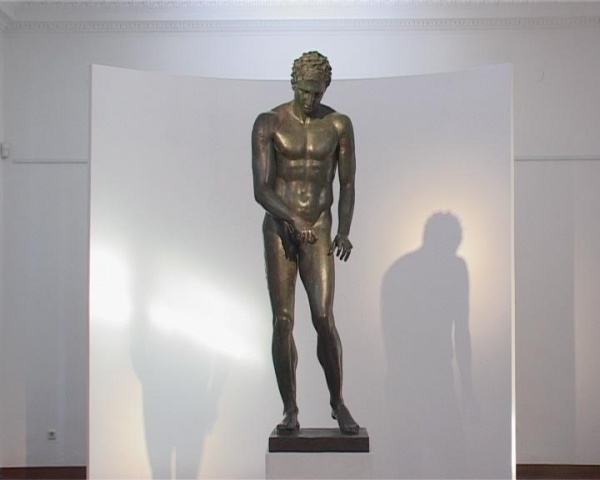Facts About Croatian Apoxyomenos
The Croatian Apoxyomenos is a captivating ancient Greek bronze statue dating back to the 2nd or 1st century BC. Discovered in 1996 on the seabed near the Croatian islet of Vele Orjule, the statue depicts an athlete using a strigil to scrape sweat and dust from his body. After its retrieval from the sea in 1999, it underwent extensive restoration and was publicly displayed in 2006. Standing at an impressive 6 feet 3.5 inches tall, it is the most complete and best-preserved among the eight known Apoxyomenos statues.
Belgian tourist René Wouters discovered the statue while diving and promptly reported it to the Croatian Ministry of Culture. The conservation process was meticulous, involving mechanical tools to remove marine organisms and repair cracks. The base of the statue features intricate square and swastika ornamentation, attesting to the high level of craftsmanship from the 2nd or 1st century BC.
Radiocarbon dating of organic material inside the statue suggests it fell into the sea sometime between 20 BC and 110 AD. Researchers believe the statue might have been thrown overboard from a Roman merchant ship during a storm. Since its discovery, the Apoxyomenos has been exhibited in various prestigious museums worldwide, including the Archaeological Museum in Zagreb, the Palazzo Medici Riccardi in Florence, the British Museum in London, and the J. Paul Getty Museum in Los Angeles.
In 2007, the Apoxyomenos received the Europa Nostra European Union Prize for Cultural Heritage. The Croatian government subsequently decided to house the statue in the Apoxyomenos Museum in Mali Lošinj, where it has been on display since April 2016. The statue has sparked intriguing debates among archaeologists regarding the model's handedness and occupation, with some suggesting it might represent a wrestler rather than just an athlete cleaning his body.
The Apoxyomenos remains a fascinating artifact, offering a glimpse into ancient craftsmanship and cultural practices.

 Slovenia
Slovenia